Chinese Name: 钱塘江 Pronunciation: Qiántáng Jiāng
Length: 589km (north source); 522km (south source)
Drainage Area: 55,600 square kilometers
Suggest Visiting Hours: 1 to 3 hours
Address: Binjiang District, Hangzhou City, Zhejiang Province, China
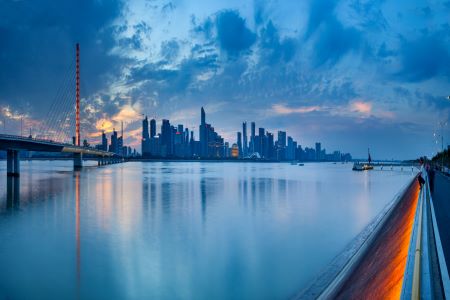
Qiantang River, formerly known as Zhe River (Zhe Jiang), was first named in The Classic of Mountains and Seas (Shan Hai Jing) and got its name because it flowed through the ancient Qiantang County (now Hangzhou). It is one of the main birthplaces of Wu Yue culture.
Qiantang River is the largest river in Zhejiang Province. It is the source of the name of Liangzhe Road in the Song Dynasty and the name of Zhejiang Province in the early Ming Dynasty. The length of the river is 588.73 km from Xin’an River as its north source and 522.22 km from Majin Stream as its south source. From the source, it flows through the south of Anhui Province and Zhejiang Province, with a drainage area of 55,600 square kilometers, and flows into the East China Sea via Hangzhou Bay.
Known as “The Best Tidal Bore under the Heaven”, Qiantang River tidal bore is a natural wonder of the world. It is caused by the gravity of celestial bodies and the centrifugal action of the earth’s rotation, as well as the special topography of the Hangzhou Bay with a bell-shaped mouth.
In April 1935, Qiantang River Bridge was designed and constructed by Mao Yisheng, a famous bridge expert in China. It was completed and opened to traffic on September 26th, 1937, with a total investment of 1.6 million US dollars (the price of that year). Qiantang River Bridge is a brilliant milestone in the history of Railway Bridge in China. It is also the first double-deck Railway and Highway Bridge domestically designed and built in China. It runs across the north and south of Qiantang River and is the main traffic road connecting the Shanghai-Hangzhou-Ningbo railway and Zhejiang-Jiangxi railway. The bridge is a double-deck steel truss girder bridge with a total length of 1,453 meters, a width of 9.1 meters, and a height of 71 meters.
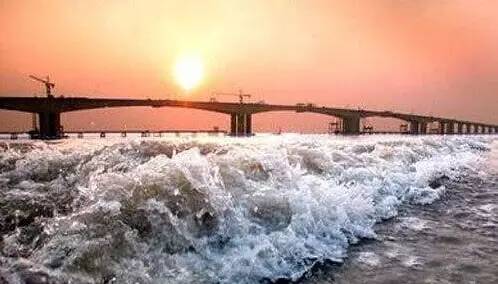
Qiantang River Tide occurs in the Qiantang River Basin. Due to the tide generating force of the moon and the sun, the sea surface fluctuates periodically. The best place to watch the tide is in Yanguan Town of Haining City, and the best time to watch the tide is from August 15 to August 18 of the lunar calendar. It is the largest tide of Qiantang River during the period of August of the lunar calendar. When the tide comes, the sound is like thunder, which is very spectacular.
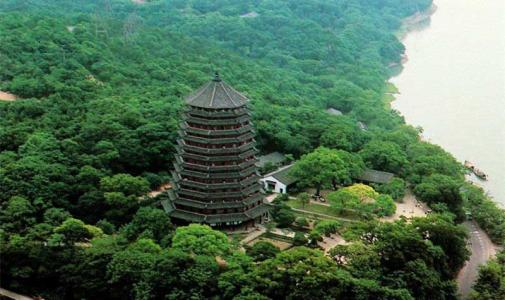
Located in 16 Zhijiang Road, Xihu District, Hangzhou City, Zhejiang Province, China, Liuhe Pagoda is a brick and wood mixed tower. The pagoda was built by the monks under the command of Qian Chu, king of State of Wuyue (907-978), to suppress the tidal bores of Qiantang River. However, it was destroyed in the Fangla Uprising in the Northern Song Dynasty (960-1127), and the existing pagoda was built in the Southern Song Dynasty (1127-1279). The eaves of the pagoda were burned by Japanese pirates during the Jiajing period (1522-1566) of the Ming Dynasty (1368-1644). The main part of the existing eaves was built in the Qing Dynasty (1636-1912). The plane of the tower is octagonal. There are seven floors in the existing tower. There are corridors and chambers inside the tower. In 1961, Liuhe Pagoda was listed as the first batch of the national key cultural relic protection units.
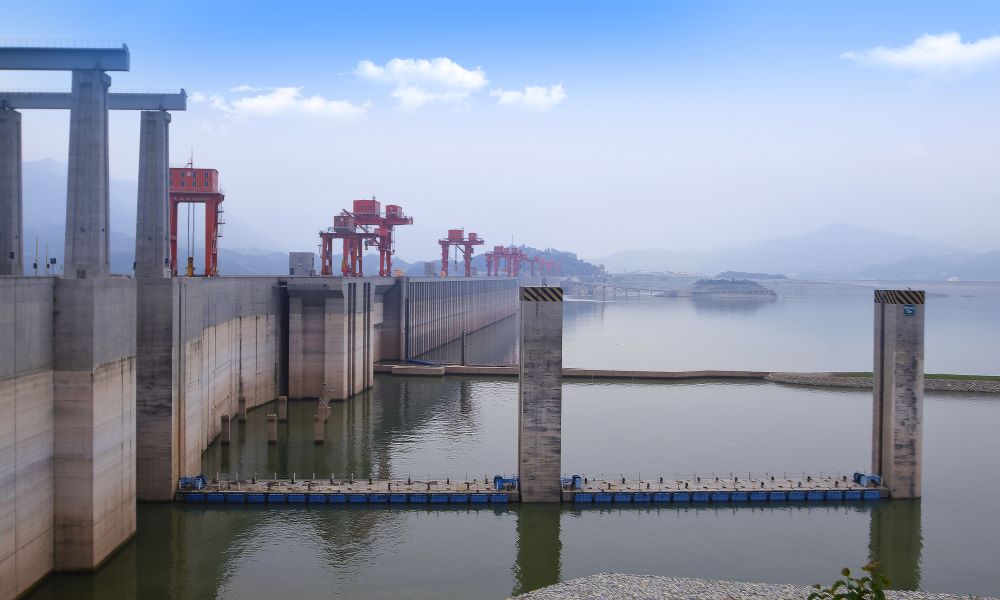
Located by Qiantang River in north of Beauty Mountain, Xiaoshan District, Hangzhou City, Zhejiang Province, Beauty Dam is a T-shaped dam that goes straight into the river from south to north. It is one of the holy places to watch the spring tide of the Qiantang River. At Beauty Dam, the main view is “back-flow bore”, which refers to the tide that is formed when the rapidly advancing tides encounter groins and other artificial obstacles.
There is a legend that the little princess of the Dragon King of Qiantang River was playing on the Beauty Mountain and fell in love with a fisherman of Wuli Village. The little princess took it upon herself to marry the fisherman, which angered the Dragon King. The Dragon King decided to flood the village. The princess and the fisherman decided to jump into the river and die in love. Surprisingly, they jumped into the river safe and sound. Later generations built a dam where they landed to block the river and named it “Beauty Dam”.
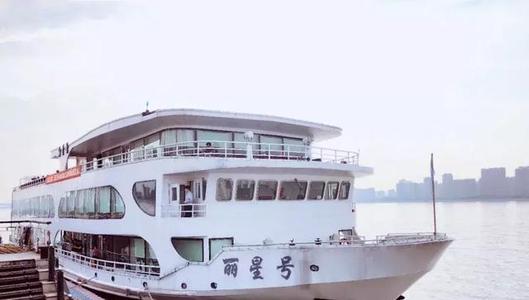
Lixing Cruise Ship is a large multi-functional luxury cruise ship integrating tourism and catering in the Qianjiang River system. The whole ship has three floors. The first floor has a lobby, a box, and a kitchen. The second floor has a large restaurant. The third floor has a sightseeing deck. Besides, fixed tables are set on both sides. During the tour, the boat provides exquisite dinner. The whole night tour lasts about 90 minutes. Along the way, you can visit Xixing Bridge, Olympic Sports Center, Fuxing Bridge, Qiantang River Bridge, and other coastal landscapes. On Tuesdays, Fridays and Saturdays, you can also enjoy the Qianjiang New City Light Show.
It is suggested to visit the Qiantang River Bridge, then take a cruise, and then go to the Liuhe Pagoda.
Qiantang River Tide is the largest on the 15th day of the 8th lunar month, and you can see the tide from the 1st to the 5th and 15th to the 20th day of each lunar month, so you can watch the tide for 120 days in a year.
When the tide comes, the sound is like thunder, and also like ten thousand horses galloping. Especially around the Mid-Autumn Festival, guests from all over the world swarm to see the wonders of the Qiantang River Tide.
If you want to take a night cruise on Qiantang River, you should go to Olympic Sports Center Pier.
Take bus 402, 419, 1505M, and get off at Yangfan Road and Danfeng Road Crossing North Station.
Take Subway Line 6 or Line 7, and get off at Olympic Sports Center Station (Exit E). Walk along Feihong Road to the riverside.
Chinese: 请带我去奥体中心码头。English: Please take me to Olympic Sports Center Pier.
If you go to Olympic Sports Center Pier, it takes about 50 minutes and about 50 yuan from Hangzhou East Railway Station.
If you go to Olympic Sports Center Pier, it takes about 50 minutes and about 40 yuan from Hangzhou South Railway Station.
If you go to Olympic Sports Center Pier, it takes about 60 minutes and about 80 yuan from Hangzhou Xiaoshan International Airport.
